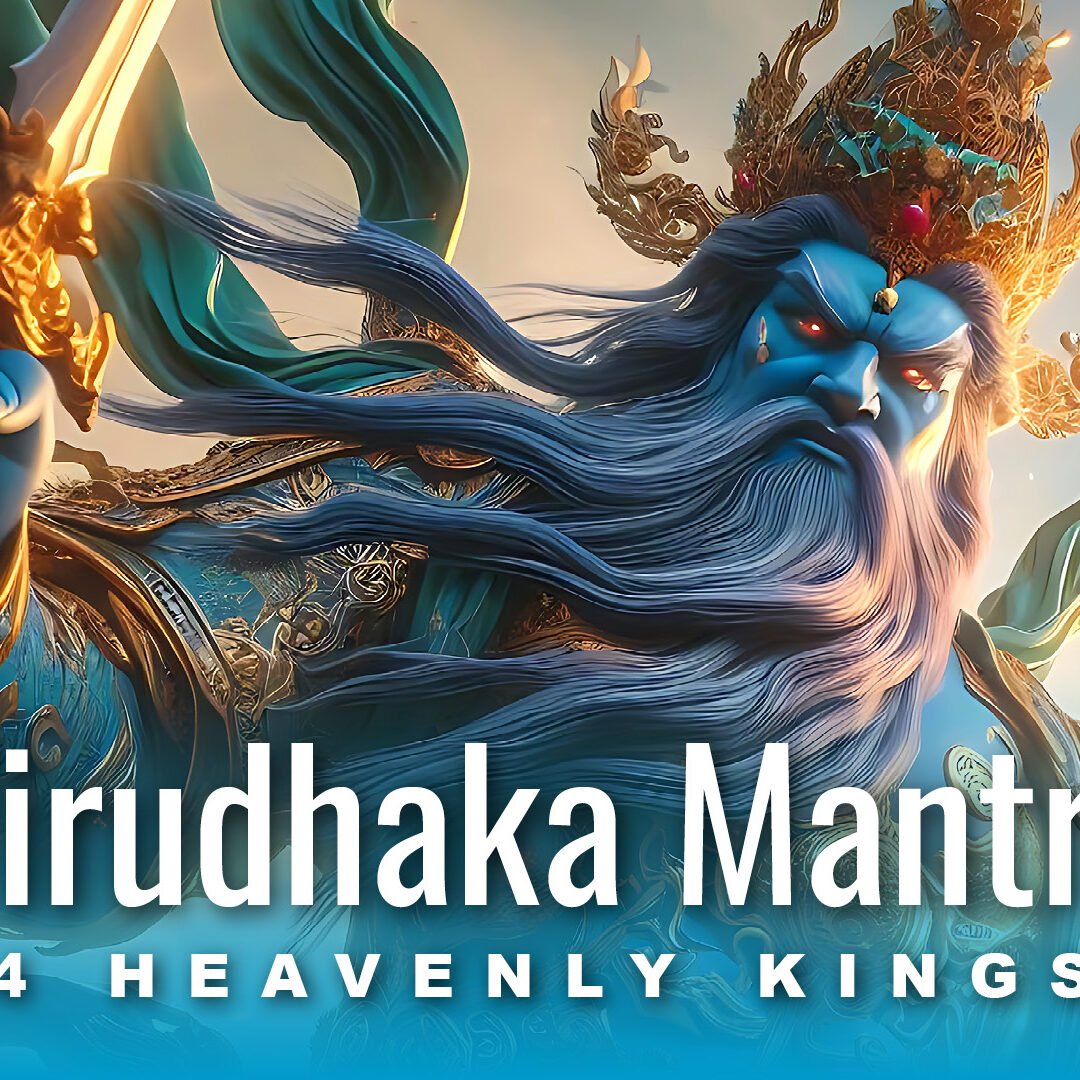Video: 3 Supremes: Vajrasattva, Tara, Ushnisha Vijaya: Purification, Removing Suffering, Enlightenment

Why are Vajrasattva, Tara and Ushnisha Vijaya described as the Three Supremes or the Three Special Deities? What is their triad of practice? Why are Purification, overcoming Fears and Removing Suffering considered the supreme practices in Mahayana? We answer these questions, and more, and end with a Merit Practice of the Three Supremes from the great Marpa Lotsawa.
Video:
In all lineages of Buddhism, the triad of practice can be summarized as: purifying Ignorance to attain wisdom; overcoming our fears and poisons to remove suffering; and ultimately, to triumph over death, through Enlightenment.
There are many ways to describe the same concepts. We can correlate these three to the Three Jewels, or as the Three Supremes, or the Three Great Bodhisattvas, or as the Three Roots. All of these describe the same trinity of wisdom, compassionate method, and realizations which lead to Enlightenment. The Three Supremes overcome the three great obstacles. Vajrasattva purifies our Ignorance with Wisdom. Tara purifies the Poisons with Compassionate Method and Activity. The supreme realizations of Ushnisha Vijaya overcomes Death itself through life-affirming practices.
Together, they are the Three Supremes as taught by Marpa Lotsawa. They symbolize the Three Jewels, the three aspects of practice, which are wisdom, compassionate method and activity; and also overcoming the three major obstacles of ignorance, suffering, and death.
This is expressed in the opening praises of several of Marpa Lotsawa’s practices. For example, from the Sadhana of Venerable Tara it begins with:
“Arising from the Ushnisha, Namgyalma, destroying the Lord of Death ; Tara, who liberates the fears of Samsara; Lord of All Families, Vajrasattva; I bow to the wonderful and supreme deities.”
The Three Supremes represent the same thing as the Three Jewels, the Three Great Bodhisattvas and the Three Roots. These three aspects of practice are wisdom, compassionate method and activity.
For example, the Three Jewels of Buddha, Dharma and Sangha, respectively represent wisdom, compassionate method and activity. Buddha brought the Wisdom. The Dharma are the teachings guiding us with compassionate method. Activity is represented by the Sangha, or followers of Buddha.
What about the Three Bodhisattvas? Similarly, Manjushri represents Wisdom, Avalokiteshvara represents Compassionate methods, and Vajrapani represents the power of activities. This is why in temples we often see these three together on a shrine, or together in a mural.
Then, for Vajrayana, we have Three Roots as well. With the Three Roots: Guru or Teacher represents the root of Wisdom, Yidam represents the root of Compassionate method, and Dakini represents the root of activities.
In terms of sacred implements and symbolism, we also have the vajra, bell and mala. Bell represents Wisdom, Vajra represents compassionate means, and mala represents activities, realizations and accomplishments.
All of these are reflections of the same Three Supremes, the same practices and wisdoms, presented in various ways to convey core truths. Regardless of how you visualize or practice the three supremes, every complete Buddhist practice includes an equal emphasis on Wisdom, Compassionate Method and Activity.
You can think of these three in the old Buddhist metaphor of the wings of a bird. Wisdom and Compassion are the two wings of Enlightenment, but the bird only flies when both wings flap — which represent activity — the activities of wisdom and compassion working together.
For example, Buddha attained Enlightenment under the Bodhi Tree. If he simply wanted to help himself, we would never have heard of his triumph. Instead, he then applied his wisdom and compassion, by teaching his disciples, which became the recorded Dharma teachings. He also shared his realizations in Enlightened Activities — teaching the Dharma in such a compelling way that the Sangha community grew and spread around the world. Without the Sangha’s activity we would never have heard of the Dharma.
For this reason, we don’t only take Refuge in Buddha. We don’t only take refuge in Dharma. We take refuge in all Three: Buddha Dharma and Sangha; or Teacher, Yidam and Dakini, or Vajrasattva, Ushnisha Vijaya and Tara, or Manjushri, Avalokiteshvara and Vajrapani.
Wisdom without Compassion is incomplete. Wisdom and Compassion without activity is a flightless bird. We have to flap our wings with Enlightened Activities, to fly to the other shore of Enlightenment.
Among the most beautiful of Triple Practices is the Three Special Deities practice, brought from India to Tibet by the great translator hero-teacher Marpa Lotsawa.
The Lotsawas or great translators of Tibet were genuine Dharma heroes and treasures. They spent their entire lives in difficult journeys of months or years to India, through a landscape of perils. For this reason, Tara was their constant companion, protecting them as they journeyed. Their lives were epic in scope and scale, and their contribution to the Dharma is supreme.
Of these great hero translators, Marpa was among the greatest. He was born in the year 1012. His most famous student was the great Milarepa. Yet it is Marpa who brought the teachings treasured in many lineages today.
Each journey over the mountain passes brought danger from the elements and bandits. He spent many months struggling to journey to India and Nepal, to learn from the greatest Mahasiddhas, including Naropa.
The cycle of teachings from Marpa on the Three Special Deities includes separate practices for each of the three, but all sadhanas start with the praise to all Three Special Deities. We might focus on our Yidam as a main practice, but start with the praise, prostration and offerings to the Three Special Deities. The following recitation is from the Sadhana of Venerable Tara called Udamvara Flower, a subsection of the Three Special Deities passed down from Master Marpa the Translator. Here we only recite the frontal generation together with the seven limbs of practice and visualized offerings and the dedication.
You can follow this with the mantras of the Three Supremes, Vajrasattva mantra, Tara mantra and Ushnisha Vijaya mantra. See linked videos for beautiful chanting of these mantras. For a longer practice, you would include the 21 praises to Tara and the Ushnisha Vijaya Dharani. If you practice a Yidam, you might follow the merit practice with your self-generation practice. Here begins the recitation:
Arising from the Ushnisha, Namgyalma, destroying the Lord of Death ; Tara, who liberates the fears of Samsara; Lord of All Families, Vajrasattva; I bow to the wonderful and supreme deities.
In the Three Supremes, Vajrasattva, Tara, and Ushnisha Vijaya, in the Three Jewels, Buddha, Dharma, and Supreme Assembly, in the Three Roots Guru, Yidam and Dakini, I take refuge until Enlightenment. By the merit of my generosity and other deeds, may I attain Buddhahood for the sake of all beings.
In the Three Supremes, Vajrasattva, Tara, and Ushnisha Vijaya, in the Three Jewels, Buddha, Dharma, and Supreme Assembly, in the Three Roots Guru, Yidam and Dakini, I take refuge until Enlightenment. By the merit of my generosity and other deeds, may I attain Buddhahood for the sake of all beings.
In the Three Supremes, Vajrasattva, Tara, and Ushnisha Vijaya, in the Three Jewels, Buddha, Dharma, and Supreme Assembly, in the Three Roots Guru, Yidam and Dakini, I take refuge until Enlightenment. By the merit of my generosity and other deeds, may I attain Buddhahood for the sake of all beings.
Instantly, The entire merit field appears before me.
I prostrate with complete purity to the Three Supremes, the Three Jewels and the Three Roots and all the Buddhas and Bodhisattvas who dwell in the ten directions and three times.
I offer real and imagined flowers, incense, butter lamps, scent, food, music, and so forth. Assembly of Three Supremes, please accept it.
I confess all my faults from beginningless time until now, committed with a mind under the sway of the afflictions, such as the ten nonvirtues.
I rejoice in whatever merit has been accumulated in the three times by Hearers, Solitary Realizers, Bodhisattvas, ordinary beings, and others.
Please turn the wheel of the Dharma according to the intentions and mental dispositions of sentient beings.
Until Samsara is emptied, please do not pass into Nirvana but look with compassion upon sentient beings that are drowning in the ocean of suffering.
May whatever merit I have accumulated become the cause of Enlightenment for the benefit of sentient beings.
May all beings have happiness and the causes of happiness. May they be free from suffering and the causes of suffering. May they not be separated from the sublime happiness that is free from suffering. May they rest in the great equanimity that is free of the duality of attachment and aversion.
Thus one gathers the accumulations through prostrating, offering, confessing, and generating the two types of bodhichitta of the preliminaries.
By the power of praising and supplicating you, wherever I and others reside may illness, obstructive spirits, poverty, and fighting be pacified, and may the Dharma and auspiciousness flourish.
Buddhas, bodhisattvas, and the Sangha, please heed me. From the great, beginningless Samsara, I and all beings have performed the virtue of cultivating generosity and ethical discipline and have rejoiced in the expression of these deeds. By the virtue practiced thus, with the mind of holy generosity, and for the sake of our parents, teachers, masters, and all sentient beings, may we achieve Buddhahood. By the merit arisen from this virtue, may we acquire all the perfections such as life, merit, enjoyment, a retinue, and virtuous practice, and may all obstacles be pacified without exception.
May I attain Enlightenment for the benefit of all sentient beings.
We dedicate the merit of this presentation to the benefit of all sentient beings.
More articles by this author
Search
Latest Features
Please support the "Spread the Dharma" mission as one of our heroic Dharma Supporting Members, or with a one-time donation.
Please Help Support the “Spread the Dharma” Mission!

Be a part of the noble mission as a supporting member or a patron, or a volunteer contributor of content.
The power of Dharma to help sentient beings, in part, lies in ensuring access to Buddha’s precious Dharma — the mission of Buddha Weekly. We can’t do it without you!
A non-profit association since 2007, Buddha Weekly published many feature articles, videos, and, podcasts. Please consider supporting the mission to preserve and “Spread the Dharma." Your support as either a patron or a supporting member helps defray the high costs of producing quality Dharma content. Thank you! Learn more here, or become one of our super karma heroes on Patreon.
Lee Kane
Author | Buddha Weekly
Lee Kane is the editor of Buddha Weekly, since 2007. His main focuses as a writer are mindfulness techniques, meditation, Dharma and Sutra commentaries, Buddhist practices, international perspectives and traditions, Vajrayana, Mahayana, Zen. He also covers various events.
Lee also contributes as a writer to various other online magazines and blogs.


















